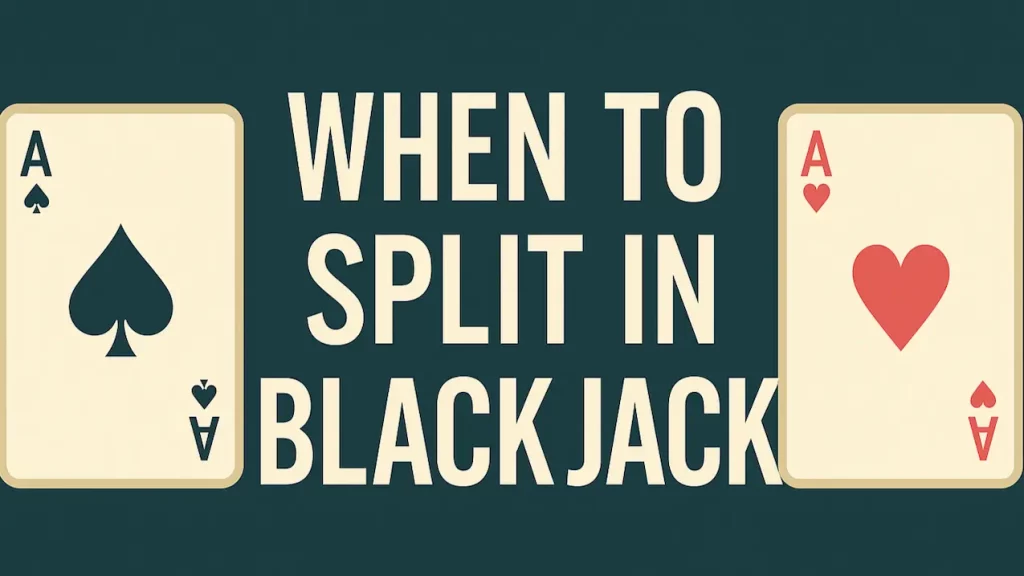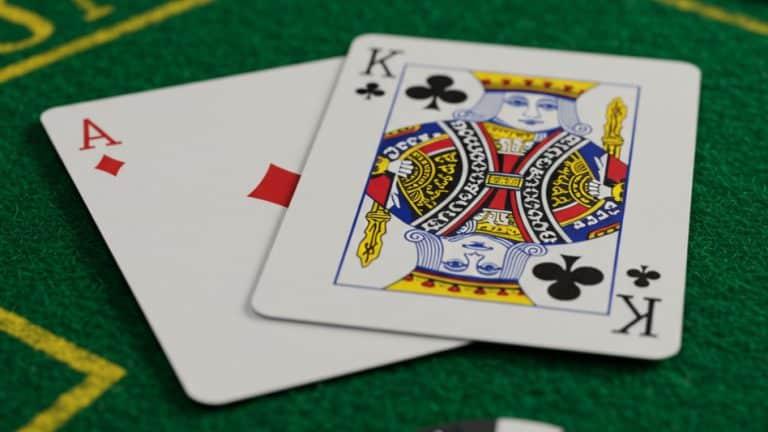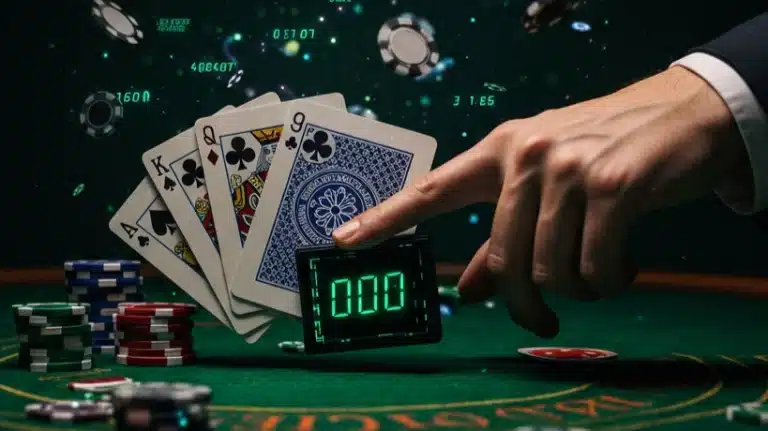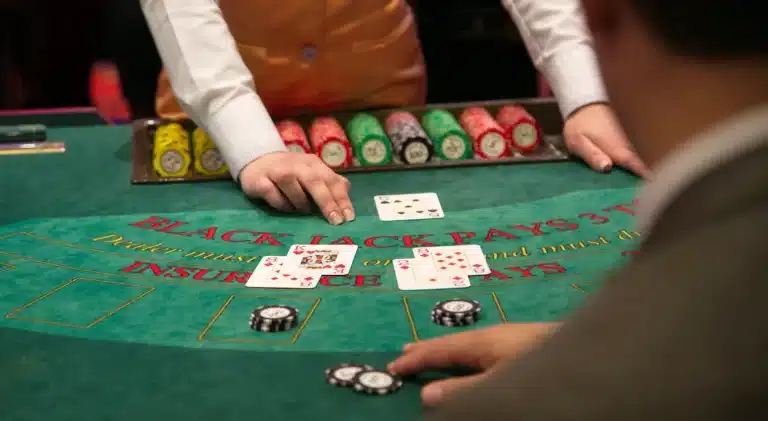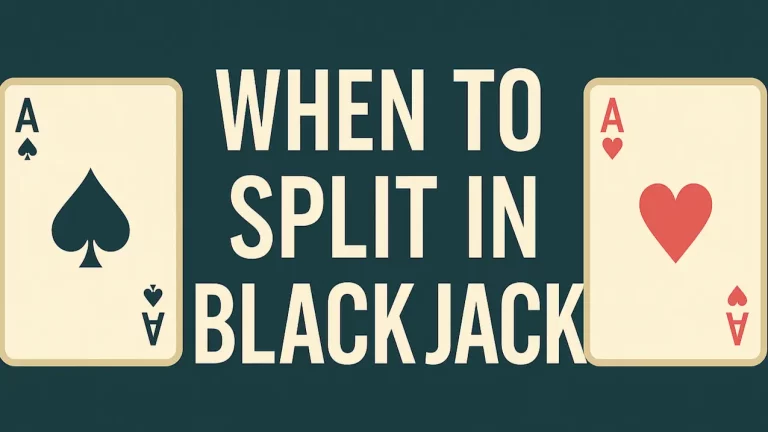🎯 TL;DR: When to Split in Blackjack
- ✌️ Always split Aces and 8s—these give you the best chance to improve.
- ❌ Never split 5s or 10s; keep them as strong hands instead.
- 🧮 Split 2s, 3s, 6s, 7s, or 9s based on the dealer’s upcard—strategy varies by situation.
- 📉 Avoid splitting when the dealer shows a high card (7–Ace) unless the strategy chart says so.
- 🎯 Use a basic strategy chart to make the best split decisions consistently.
If you’ve ever sat at a blackjack table and been dealt a pair, you’ve faced one of the game’s most critical decisions: Should you split your hand? Splitting can turn a mediocre hand into two strong ones—or double your losses if done wrong. Learning when to split (and when not to) is essential if you want to play smart and stretch your chips further.
Let’s break it down in simple terms.
What Does “Split” Mean in Blackjack?
When you’re dealt two cards of the same value—like two 8s or two Kings—you have the option to “split” them into two separate hands. You’ll need to place an additional bet equal to your original one, and the dealer gives you a second card for each hand.
So if you have two 5s making a total of ’10’ and you decide to split them, you now have two hands worth 5 each and will automatically be dealt a further card onto each of them. So let’s say you got dealt a 10 onto one of your 5s (score 15) and a 7 onto the other (value of 12). From then on you just play the hands out normally
By the way, splitting those 5s is always a big mistake, but we will get to that later!
Always Split These Pairs
Let’s start with the easy stuff, as there are some hands that you should always, always split, as statistically it doesn’t make sense not to. Of course if you are one of those people that has special intuitions or spidey-senses telling you not to split, then you go ahead and follow your instincts, but everyone else should definitely split these hands.
🔹 Aces (A-A)
Always split Aces. Each Ace has the potential to make a 21 if paired with a 10. Keeping them together only gives you a hard 2 or a soft 12 – both of which are pretty weak hands. One thing to always keep in mind at the blackjack table is that there are more cards with a value of 10 (10s, Js, Qs, Ks) than any other card value. So that means they are more likely to be drawn, and getting a ten on top of your two Aces is not going to help you a whole lot.
🔹 Eights (8-8)
Always split 8s, even against a dealer’s strong card like a 10. Why? Because 16 is a terrible hand. Two hands starting with 8 each gives you a fighting chance to improve, as the odds are in your favor that at least one of them will end up as 18 or better.
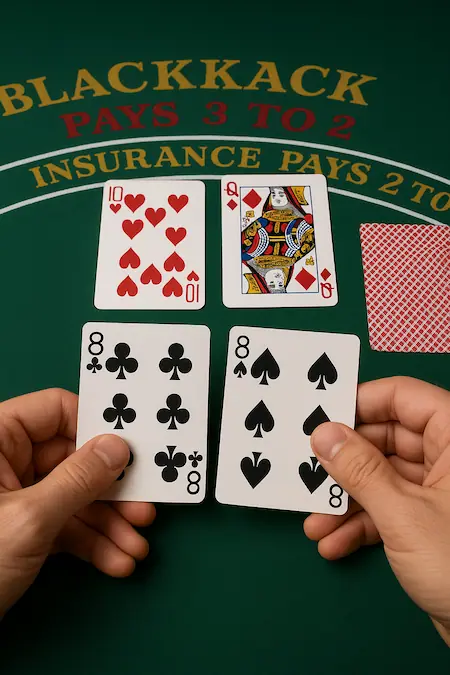
Never Split These Pairs
More advice to abide by at the blackjack table, is for the hands you should never split. Again it should be pretty easy to remember these ones as they are all the multiples of 10.
🔸 Tens (10-10, J-J, Q-Q, K-K)
You already have 20—don’t mess with that. Splitting 10s risks turning a winning hand into two weaker ones. Most players (and dealers) would kill for a 20. Well, the dealers don’t much care either way – it’s not their money – but a hand worth 20 in blackjack is definitely a keeper.
🔸 Fives (5-5)
You’re better off treating this as a hard 10 and doubling down. Splitting is likely to give you two low-value hands instead of one strong base to work with.
Situational Splits
We have shared the easy-to-remember examples, so now we will take a look at the ‘situational’ hands where splitting (or not) is not an automatic thing. In these examples, whether to split or not depends very much on the dealer’s up-card.
🔹 Twos, Threes, Sevens (2-2, 3-3, 7-7)
Split if the dealer shows 2 through 7. If the dealer has a strong up-card (8 through Ace), don’t split—just hit.
🔹 Sixes (6-6)
Split only if the dealer has 2 through 6. Against stronger cards, hitting is the safer move.
🔹 Nines (9-9)
This one’s tricky. Split 9s if the dealer shows 2 through 6 or 8-9. But do not split if the dealer has a 7 (you already have 18, and that’s better than most 2-card 7 hands) or a 10/Ace.
Why Splitting Matters
Blackjack is one of the few casino games where player input makes a real difference. Call it skill or just plain statistics: splitting strategically minimizes the house edge and maximizes your winning potential over time. The key is not just knowing what the basic strategy says, but also sticking to it, even when it feels risky in the moment.
Pro Tip: Use a Basic Strategy Chart
There’s no shame in using a cheat sheet. In fact, most seasoned players rely on blackjack strategy charts that tell you exactly what to do based on your hand and the dealer’s upcard. It’s your best weapon for making decisions like whether or not to split.
And as luck would have it, we have prepared a strategy card for you which covers every eventuality! As a reminder, you never split a pair of 10-value cards, and that goes for J-J, Q-Q and K-K too. Aces and 8s are the ones to always split, so this chart really becomes valuable when it comes to remembering the other options where your choice depends on the visible dealer’s card.
After a while you will remember what to do without referencing the chart, but here it is to get you started.
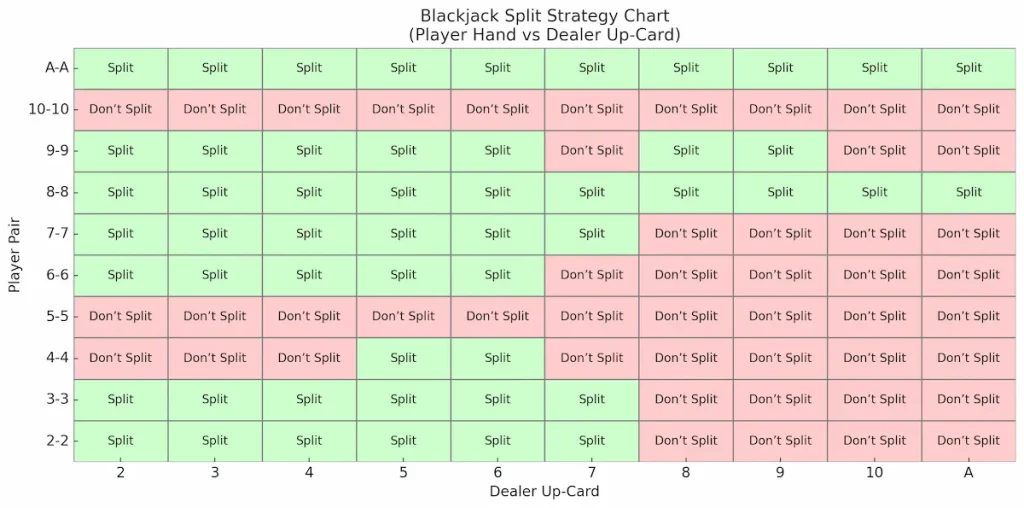
Splitting in blackjack is a powerful move—but only when used correctly. Remember the golden rules: always split Aces and 8s, never split 10s or 5s, and pay close attention to the dealer’s upcard for everything else. If you’re unsure, keep our strategy card handy or look for games that allow practice before real stakes.

